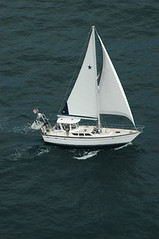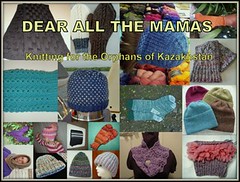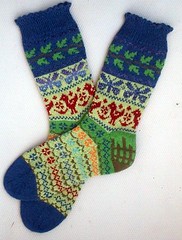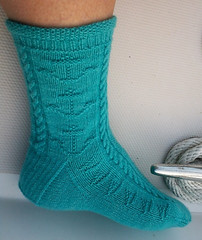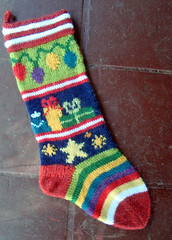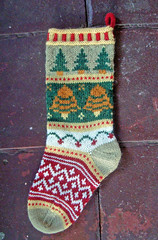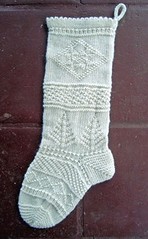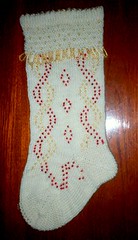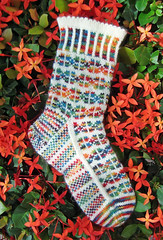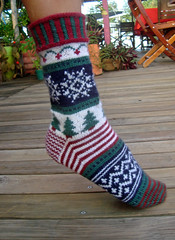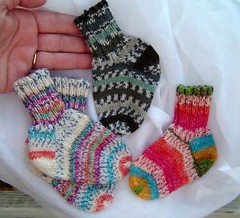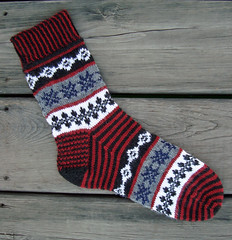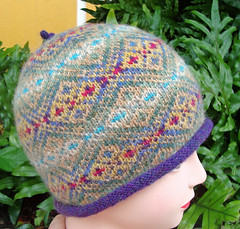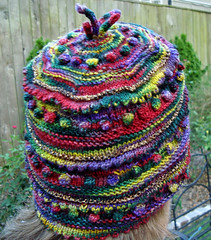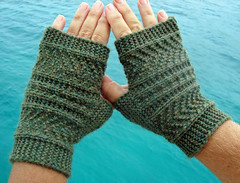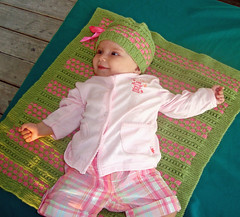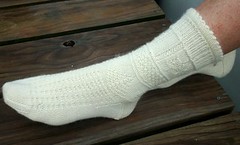
Sunday, August 16, 2009
Molas & more
 Finally! I took photos of my collection of Molas that I purchased from the Kuna women in the San Blas Islands of Panama a few months ago. As we anchored in each new group of tiny islands, we would purchase a mola from the resident family. I'll share a few here.
Finally! I took photos of my collection of Molas that I purchased from the Kuna women in the San Blas Islands of Panama a few months ago. As we anchored in each new group of tiny islands, we would purchase a mola from the resident family. I'll share a few here.These pieces of reverse applique work have been traditionally worn on the blouses o
 f the Kuna women. Two separate pieces are worn - a front panel and a back panel. These are usually matched in color and style but not necessarily in pattern as in the pair in the photo on the right. The Kuna will try to sell these as pairs, but the seller will gladly separate the panels in order to make a sale. The cash received from our purchases is an important source of income for the Kuna families. In return, we get a hand-stitched piece of beauty and the privilege of enjoying one of the most beautiful spots on earth.
f the Kuna women. Two separate pieces are worn - a front panel and a back panel. These are usually matched in color and style but not necessarily in pattern as in the pair in the photo on the right. The Kuna will try to sell these as pairs, but the seller will gladly separate the panels in order to make a sale. The cash received from our purchases is an important source of income for the Kuna families. In return, we get a hand-stitched piece of beauty and the privilege of enjoying one of the most beautiful spots on earth.
The needlework is outstanding on some of these pieces - check out the detail in the photo to the right with the US dime for scale. This is a close-up photo of the Stingray shown at top which was created by the well-known "Master Mola Maker" Venancio. Look at the "X"s- these are tiny pieces of fabric stitched over each other with exactly matching thre
 ad. Then look at the tiny sizes of the chain stitch embroidery stripes in the upper right corner of the photo. Absolutely amazing.
ad. Then look at the tiny sizes of the chain stitch embroidery stripes in the upper right corner of the photo. Absolutely amazing.Some pieces are made strictly for the tourist trade. These are faster to sew and are usually simple applique with embroidery. These smaller panels will make nice gifts for the folks back home. Again, I put a US dime in the photos to show scale.

So, I've been knitting a lot of socks lately (duh) and have been digging around in my stash for yarns. I had two skeins of flat ugly sock yarn that I knew I would never knit the way they were. One was a commercially dyed (printed) yarn from Regia. What were they thinking? Burnt orange and kelly green spots together - then striped with cornflower blue? The designer must have been colorblind - literally. A common form of colorblindness is the red-green type where these colors both appea
 r as shades of yellow. Given that assumption, this yarn would have been pretty nice. But I'm not colorblind.
r as shades of yellow. Given that assumption, this yarn would have been pretty nice. But I'm not colorblind.Solution? Overdye the stuff with brown! Ta-da - now the yarn has subtle spots of reddish brown and almost black. Much nicer for a pair of socks for a guy. The tangled mass to the far left is some of the original yarn which was horribly knotted so I didn't dye this section.
The second skein was one that I had hand-dyed many years ago as an experiment. Not successful. I tried to dye some dry yarn for a sharper color effect - but the red still bled into the dry yarn and created pink. That combined with the orange and brown areas was nasty. Eeeew. So now it is all shades of brown-red. I hope some kid will like the socks from this yarn now.

Hey! I want a turn too! This is how they are drilling the holes for new pilings to support the second floor of the new building here at the Club Nautico Marina in Cartagena. Take one drill with spokes. Have four men - one on each spoke, push the drill around and around. Set one (lucky) fellow on top for added weight.
They should have let me ride. I have alot more weight to help drill than that scrawny young kid.
Comments:
<< Home
The Molas are gorgeous! Is there any way for us average non-traveling Americans to get one?
The yarn looks so much better after you dyed it! I have some pretty awful colors myself!
The yarn looks so much better after you dyed it! I have some pretty awful colors myself!
I want one of those molas! The work is fantastic and I like how you're contributing directly to the Kuna economy.
That is one ingenuous construction crew. They use their brain, as well as their brawn. Who needs fossil fuel, when you have intelligence? (I am not being at all snarky. I truly admire thirs.)
Oh my...... your collection of molas is amazing. I love them all, especially the first three. Amazing work.
Post a Comment
<< Home


